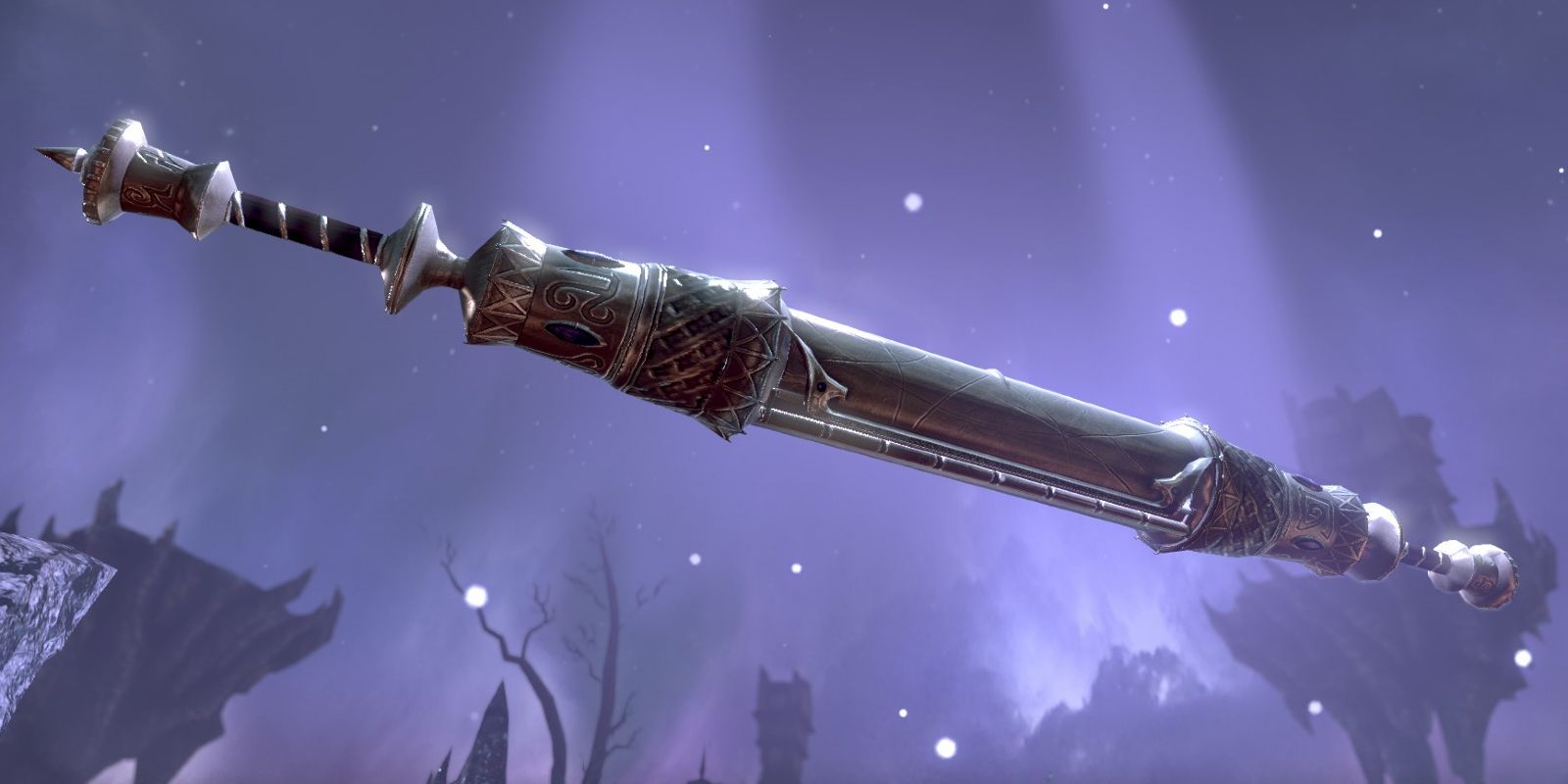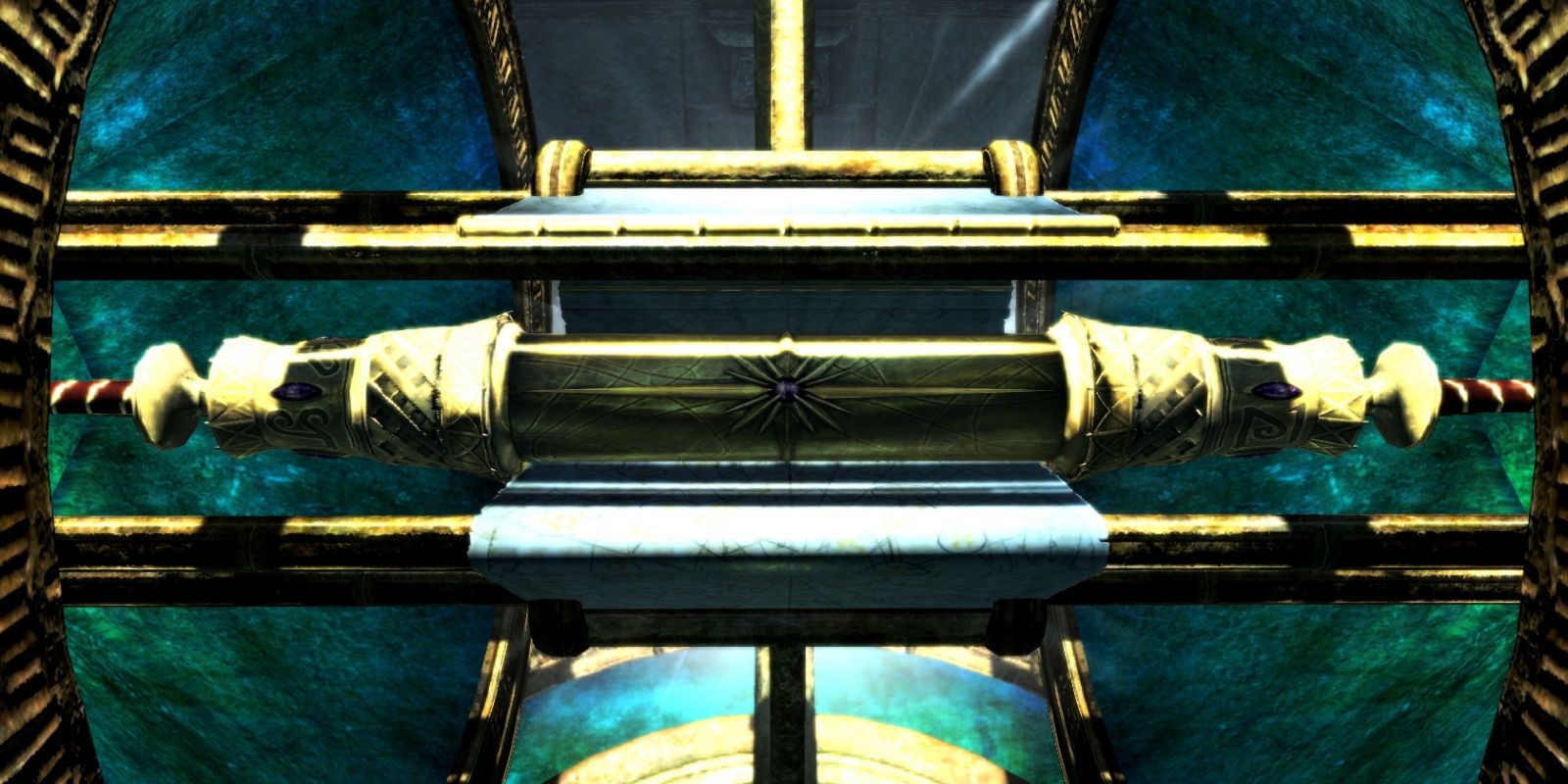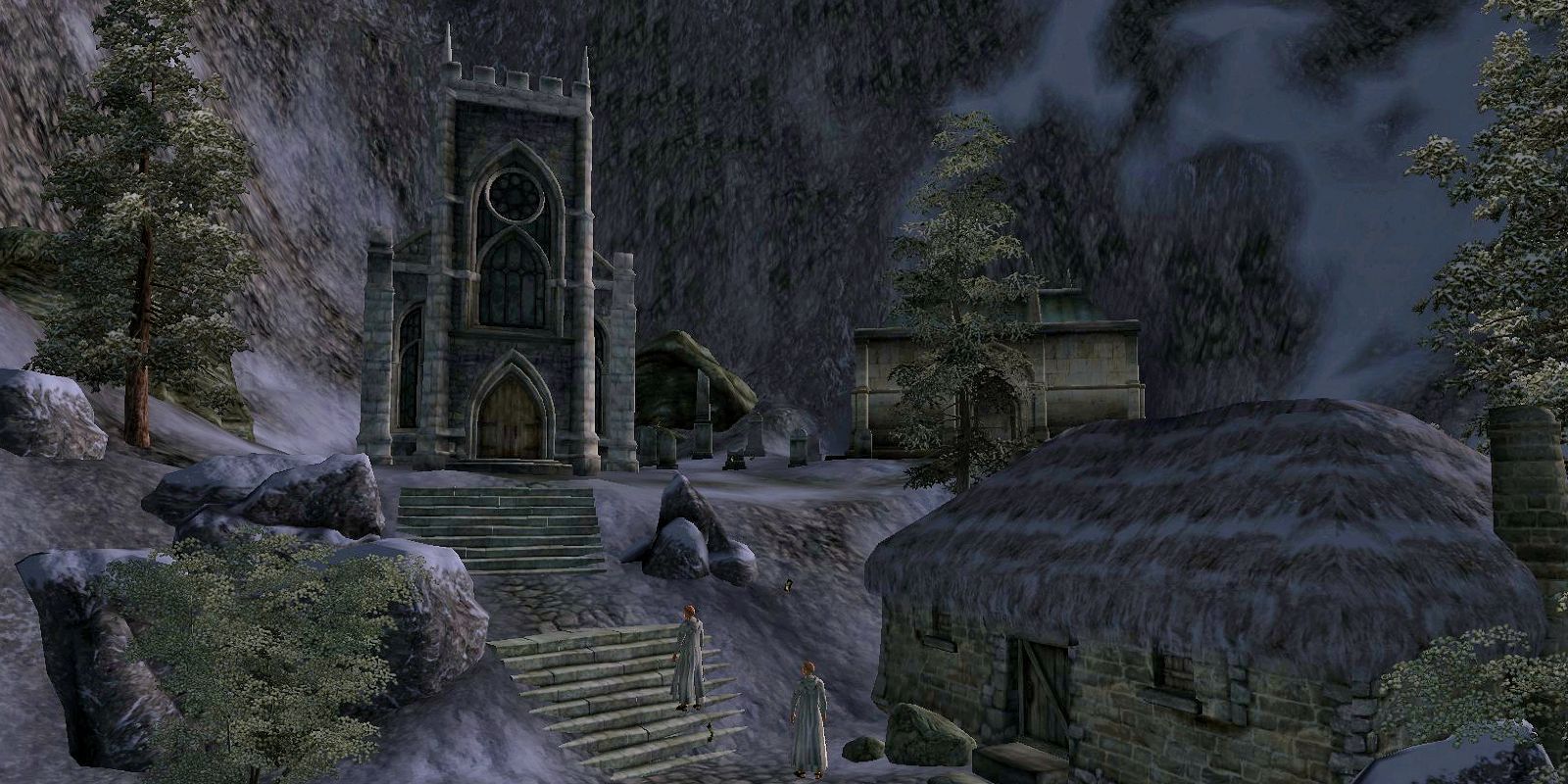The Elder Scrolls takes its name from actual items in the realm of Nirn, but the Elder Scrolls are rarely seen or used in the games. In fact, only the two most recent entries, Oblivion and Skryim, let the player see an Elder Scroll. The Elder Scrolls are immensely powerful artifacts that tell the events of the past and future simultaneously and have been coveted throughout history, changing hands as different denizens of Tamriel seek to divine prophecies from them.
The origins of the Elder Scrolls are unknown. Many refer to the Scrolls as the Aedric Prophecies, believing they are creations of the Aedra, immortal beings that crafted The Elder Scrolls' realm of existence. This is likely a religious interpretation of the Elder Scrolls' origins, though, since a subset of the Aedra are worshipped as a pantheon of gods throughout Tamriel, the Nine Divines. Though the Elder Scrolls may or may not have been created by the Aedra, it is known that the artifacts have a close connection to Akatosh, the Dragon God of Time.
In Skyrim, Paarthurnax explains that dragons are uniquely susceptible to the powers of the Elder Scrolls, since they are descended from Akatosh. It was an Elder Scroll that sent Alduin forward through time from the Merethic Era - before the age of Men in Tamriel's timeline - to the Fourth Era where he instigated the Dragon Crisis in Skyrim. This use of an Elder Scroll demonstrates their powerful nature and shows that they are capable of much more than predicting the future, though the full extent of their capabilities are unknown since they have a strong relation to the flow of time itself.
What Exactly Are The Elder Scrolls?
Physically speaking, the Elder Scrolls are actual scrolls, usually gold in color and quite large. There are numerous Elder Scrolls, though their exact number is impossible to know. The Scrolls can be physically held, but their number is uncountable since they appear to exist both within and beyond the physical realm. Any attempt to tally the number of Elder Scrolls has been fruitless since they seemingly change place and number at random.
The most common use for the Elder Scrolls is as a reference for both past and future events. Each Elder Scroll contains a variety of possible futures, but once a prophecy has come to pass, it is permanently recorded in the Scrolls. This makes the Elder Scrolls an objective record of past events. These records of the past are unchangeable by any known magic. In "Divining the Elder Scolls [sic]," one of The Elder Scrolls' in-game books from Oblivion, an anonymous author posits that reading an Elder Scrolls is akin to getting a glimpse of the flow of time itself. Because of their extremely mystical, unknowable nature, reading an Elder Scroll is not just a matter of opening one.
Being able to decipher the contents of an Elder Scrolls takes years, often decades, of preparation and training. According to "Effects of the Elder Scroll" by Justinius Poluhnius, those who attempt to read an Elder Scroll unprepared have reported seeing little more than jumbled runes and unknown etchings, often arranged in the shapes of constellations and birth signs. Some are able to decipher the Elder Scrolls without extensive training but are blinded permanently or driven to insanity in the process. Though they may have lost their sight, these readers who managed to retain their mind are granted a fragment of the knowledge contained within the Elder Scroll.
Deciphering an Elder Scroll with the proper training will only grant one the knowledge of possible future events. Each attempted reading of an Elder Scroll is a transaction of sight or sanity in exchange for a more thorough understanding of its contents. The Greybeards at Skyrim's High Hrothgar consider the study of the Elder Scrolls to be blasphemy. Only the Dwemer, a bygone race, were able to read the Elder Scrolls without side effects thanks to advanced technologies like the Lexicon. The Last Dragonborn can attempt to read an Elder Scroll in Skyrim, but will only be blinded if not properly prepared for the task by Paarthurnax.
Who Keeps The Elder Scrolls Throughout Tamriel's History
Throughout the ages of Tamriel, the Elder Scrolls have fallen into many different hands. Wars were fought over their control, and prophecies were divined with them that would lay dormant for thousands of years. By the time the mainline Elder Scrolls games take place, the divine artifacts are primarily possessed by the Cult of the Ancestor Moth, though the Scrolls' nature makes it impossible for the Cult to possess them all. Under control of the Septim Dynasty in the Third Age, the Cult of the Ancestor Moth holds the Elder Scrolls in the Imperial Library of the White-Gold Tower, though the Cult of the Ancestor Moth is an ancient organization. According to tradition, only the Moth Priests are allowed to read the Elder Scrolls, and do so in order to decipher divine prophecies for the Emperor.
Only a select number within the Cult of the Ancestor Moths are bestowed with the ability to decipher the Elder Scrolls. These chosen to be Moth Priests are taken to one of many sacred Ancestor Groves throughout Tamriel, where they use a special knife to remove the bark from Canticle Trees. The bark is then ground and spread on the priests' bodies in order to attract the Ancestor Moths, whose ancient magic allows them to read the Elder Scrolls. The Moth Priests then dedicate their lives to periodically reading the Elder Scrolls and pondering the knowledge they've been bestowed with, while their vision gradually fails.
Eventually, every Moth Priest will take part in what is known as the Penultimate Reading, an act of prophecy where the only knowledge given by the Elder Scroll is the warning that the next reading will be the Priest's last. The Ultimate Reading then imbues the Moth Priest with one final enlightenment, permanently blinding them. Moth Priests who have been blinded retire from the Imperial Library, leave The Elder Scrolls' Imperial City, and live out the rest of their lives in the Temple of the Ancestor Moths in Cyrodiil's Jerall Mountains. There, the Priests nurture the moths which gave them their power to read the Elder Scrolls, and weave their silk into powerful garments that allow adepts of the Cult to acquire limited powers of prescience without being granted permission to actually read the Elder Scrolls.
Despite the extensive lore regarding the Cult of the Ancestor Moth, there are inexplicable examples of others using the Elder Scrolls for more than just prophecy. In Oblivion, the Thieves Guild's Gray Fox tasks the Hero of Kvatch with stealing an Elder Scroll from the Imperial Library. With it, the Gray Fox breaks the curse of Nocturnal's Cowl and restores his identity as Corvus Umbranox, the Count of Anvil. It's never explicitly addressed how the Gray Fox uses the Elder Scroll, but seems to contradict the lengthy training the Moth Priests must go through.
Following the events of Oblivion, the Elder Scrolls are inexplicably scattered throughout Tamriel, vanishing from the Imperial Library. The Last Dragonborn later also uses an Elder Scroll to peer through the Time Wound and learn the Dragonrend shout in order to defeat Alduin. This is similarly contradictory to the Gray Fox's actions, but the Dragonborn's prophesied role in the history of The Elder Scrolls, that of saving Nirn from Alduin's destruction, makes it much more plausible that they would be able to use the artifact.



